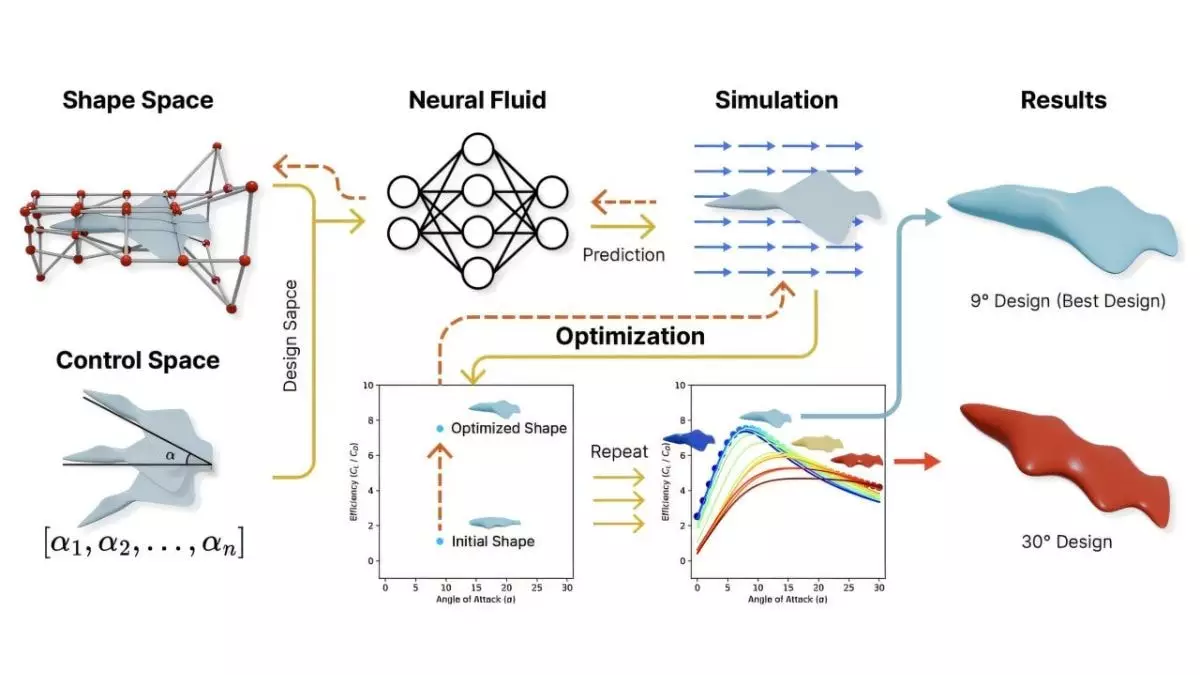The endeavor to enhance our interaction with the ocean has long been inspired by its inhabitants. Marine animals such as fish and seals exemplify unparalleled efficiency in their movements—an essential trait for survival in a challenging environment. The recent shift towards mimicking these biological marvels through advanced technology is promising, but it also warrants skepticism. While researchers from MIT and the University of Wisconsin-Madison now aim to develop ultra-efficient underwater gliders through artificial intelligence, this approach risks oversimplifying the complex adaptations that nature has refined over millions of years. Nature’s solutions are nuanced, context-dependent, and intertwined with ecosystems and evolutionary pressures that technology can’t fully replicate in a lab or computational model. Relying heavily on AI to create forms based on limited biological analogs might overlook crucial ecological dynamics, resulting in designs that are efficient in simulations but fail in the unpredictable real world of the seas.
AI-Driven Design: Promising Efficiency or Slipping into Overconfidence?
The innovative use of machine learning to formulate new underwater shapes demonstrates the enormous potential of AI in engineering. By simulating a multitude of forms and analyzing their lift-to-drag ratios, researchers aim to produce gliders that require less energy and have longer operational ranges. However, this reliance on AI-driven simulations can be overly optimistic. Algorithms depend heavily on the data they are trained on and the assumptions embedded within them. The predicted efficiencies might not translate seamlessly into real-world conditions laden with turbulence, biologically active zones, and unpredictable currents. Moreover, AI models tend to optimize for specific parameters like shape and lift-to-drag ratios while neglecting other critical factors such as durability, biofouling, and environmental impact. There is a danger in viewing these bioinspired designs as purely technical achievements without acknowledging their ecological footprints or the potential for unforeseen technological limitations.
Commercialization and Its Risks: Are We Prepared?
The rapid advancement in fabricating these AI-designed gliders through 3D printing signals an exciting future where exploration costs could plummet and data collection could become more comprehensive. Yet, this technological optimism can breed complacency about the broader implications. In democratizing ocean research with cheaper, more efficient vehicles, there is also a risk of accelerating environmental disruption if these gliders are deployed without strict regulatory oversight. Industry interests might prioritize rapid deployment over sustainability, leading to increased ocean traffic and pollution. Furthermore, this focus on efficiency may marginalize the importance of understanding marine ecosystems holistically, fostering a technologically deterministic view that humans can control or optimize nature without unintended consequences. As we integrate these bioinspired vehicles into real-world operations, careful judgment is required to ensure they serve as tools for sustainable progress rather than catalysts for ecological imbalance.
The Political and Ethical Dimension: Navigating Innovation Responsibly
While embracing technological breakthroughs is vital for advancing our understanding of the ocean, it is equally important to recognize the political and ethical layers intertwined with such progress. In a world deeply divided over environmental priorities, the rush to deploy AI-designed ocean vehicles could further entrench inequalities, favoring industrial expeditions over conservation efforts. Center-wing liberalism advocates for responsible innovation—pushing for technology that aligns with environmental protection and social equity. It emphasizes the need for transparent regulation, interdisciplinary oversight, and public engagement before unleashing these cutting-edge tools into our oceans. Without deliberate safeguards, such rapid technological advancements risk exacerbating environmental degradation, marginalizing indigenous and local communities, and undermining global efforts to preserve marine biodiversity. Consequently, this new wave of bioinspired, AI-assisted ocean exploration must be scrutinized through a lens of social responsibility, not just scientific curiosity.



Leave a Reply